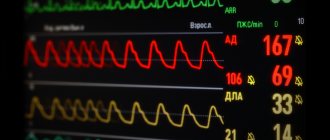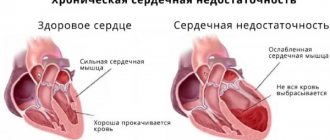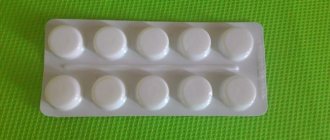Author of the article
Evgeniy Nikolaevich Konoplev
Reading time: 5 minutes
AA
The drug Doxazosin is a drug that has antispasmodic, hypolipidemic, vasodilating and hypotensive properties. The tablets have a whole range of side effects, so they can be taken only if indicated, following all the recommendations of the doctor and the manufacturer.
Composition and release form
Doxazosin has a single tablet form. Composition of the drug:
| Description | White pills |
| Concentration of doxazosin mesylate, mg per piece. | 1,2 or 4 |
| Additional components | Microcrystalline cellulose, milk sugar (lactose), sodium lauryl sulfate, starch, magnesium stearate, sodium glycolate |
| Package | Packages of 10 or 25 pcs., 30, 50 or 100 pcs. in a jar with instructions |
Mechanism of action of Doxazosin
The drug belongs to the selective competitive blockers of postsynaptic alpha1-adrenergic receptors. The active component of the composition dilates peripheral blood vessels. Due to the work of Doxazosin, the ratio of high-density lipoproteins to total cholesterol increases, the total level of triglycerides in the blood and cholesterol aggregation decreases.
Long-term use of tablets leads to an increase in the content of plasminogen activator in tissues. By blocking alpha adrenergic receptors in the stroma and capsule of the prostate, in the neck of the bladder, the resistance and pressure in the urethra, in the internal opening, are reduced. The medication increases urodynamics and reduces prostate hypertrophy.
Inhibitor tablets are well absorbed in the stomach, but food slows down the absorption process, the maximum concentration of the active substance is reached in 1.5–3.5 hours, and binds to plasma proteins by 98.5%. The half-life of doxazosin is 19–22 hours. Metabolites and dose residues are excreted from the liver through the intestines and kidneys. A single dose of the drug exhibits a hypotensive effect after 2–6 hours and lasts for a day.
Composition of the drug and mechanism of action
The active and commercial formulations of the drug are identical. Doxazosin reduces blood pressure by blocking alpha 1-adrenergic receptors. When applied as a course, it exhibits the following properties:
- dilates arteries and prevents their spasm during the release of stress hormones;
- normalizes fat metabolism;
- helps reduce myocardial hypertrophy;
- does not affect heart rate;
- antioxidant;
- prevents excessive thrombus formation;
- reduces the risk of coronary disease;
- improves erectile function in men;
- smoothly reduces blood pressure during hypertension and does not change it during normal levels.
Doxazosin has a selective effect; its use is not accompanied by the development of resistance. The onset of the hypotensive effect is observed after 30 minutes and reaches a maximum at 2–4 hours and persists throughout the day.
We recommend reading the article about adrenergic blockers for hypertension. From it you will learn about the action of adrenergic blockers, the types of drugs prescribed for pathology, as well as possible side effects and contraindications for use. And here is more information about the use of Digoxin for arrhythmia.
Directions for use and dosage
The instructions for use of Doxazosin indicate that the use of tablets does not depend on the time of consumption of food. The medicine is taken without chewing or crushing, swallowed whole, washed down with water. For arterial hypertension, the initial dose is 1 mg once a day at night, after taking the patient should lie in bed for 6-8 hours to avoid raising blood pressure.
Article on the topic: Why does dry mouth appear and what to do in this case?
If the therapeutic effect is insufficient, the daily dosage is doubled after 1–2 weeks of treatment. After selecting a therapeutic dose, it is reduced to that necessary to maintain the patient’s normal condition. For benign prostate hyperplasia in men without signs of high blood pressure, it is permissible to take 2–4 mg per day, but not more than 8 mg per day. The duration of the course of treatment is determined by the doctor.
Indications for use of tablets
Doxazosin is prescribed for the treatment of arterial hypertension as a single drug or in combination with diuretics, beta-blockers, calcium channel blockers, inhibitors of the enzyme that converts angiotensin 1 into angiotensin 2. Since the drug has a targeted effect on the arteries, it does not disrupt the flow of metabolic processes, and does not impair blood circulation and does not lead to bronchospasm, it can be prescribed to patients with concomitant diseases:
- diabetes mellitus, impaired carbohydrate tolerance (prediabetes);
- bronchial asthma;
- obesity;
- metabolic syndrome;
- angina pectoris;
- atherosclerosis of the arteries of the lower extremities;
- gout;
- prostatic hypertrophy;
- insufficiency of left ventricular function.
special instructions
According to the instructions, the drug has special instructions. These include the rules:
- Doxazosin should be used with caution in patients with pulmonary edema caused by aortic or mitral stenosis, right or left ventricular failure, decreased filling pressure, or cardiac output failure.
- It is advisable to especially closely monitor patients receiving concomitant treatment with this drug and drugs that adversely affect liver function. If the organ's functioning worsens, therapy is canceled.
- When using high doses of the drug or at the initial stage of treatment, you should not operate machinery or drive vehicles.
Doxazosin (Doxazosin)
As with any alpha-blocker treatment, especially at the beginning of therapy, when treated with Doxazosin, a small number of patients may experience orthostatic hypotension, manifested by dizziness and weakness or loss of consciousness (fainting) (see section “Dosage and Administration”). . In this regard, it is necessary to monitor blood pressure at the beginning of therapy in order to minimize the likelihood of developing orthostatic effects. Before starting therapy with Doxazosin, the patient must be warned how to avoid the symptoms of orthostatic hypotension, in particular, it is necessary to refrain from sudden changes in body position. At the beginning of treatment with Doxazosin, the patient should be advised to exercise caution if weakness or dizziness occurs.
In patients with arterial hypertension with one or more risk factors for cardiovascular disease, Doxazosin cannot be used as first-line therapy in monotherapy due to a possible increase in the risk of developing heart failure.
At the beginning of therapy or when increasing the dose of the drug, patients should be monitored to minimize possible postural effects, such as arterial hypotension, syncope.
When starting treatment of patients with BPH with Doxazosin, prostate malignancy or other causes of urinary retention should be excluded.
As older patients age, the risk of dizziness, blurred vision, and fainting increases. The patient should be informed about the increased risk of orthostatic hypotension when drinking alcohol, standing or exercising for long periods of time, or in hot weather.
Regular monitoring of blood pressure is recommended.
Since the drug has a vasodilating effect, it should be prescribed with caution to patients with such heart diseases that require emergency care: pulmonary edema due to aortic or mitral stenosis, right ventricular failure due to pulmonary embolism or exudative pericarditis, left ventricular failure with low ventricular filling pressure; in patients with severe myocardial ischemia, too rapid or severe reduction in blood pressure may lead to increased symptoms of angina pectoris.
Particular caution should be exercised when prescribing Doxazosin to patients with impaired liver function, especially in cases where drugs that can adversely affect liver function are used simultaneously. In cases of deterioration of the functional state of the liver, the drug is immediately discontinued. It is not recommended to use doxazosin in patients with severely impaired liver function due to the lack of sufficient experience with use (see section "Contraindications").
Doxazosin may affect plasma renin activity and renal excretion of vanillylmandelic acid. This must be taken into account when conducting laboratory studies.
Caution should be exercised when using Doxazosin concomitantly with thiazide diuretics or other antihypertensive drugs; if combination therapy is necessary, the dose of Doxazosin is reduced.
When using doxazosin concomitantly with PDE5 inhibitors (for example, sildenafil, vardenafil, tadalafil, udenafil), caution should be exercised, as both drugs have vasodilatory effects and may lead to the development of symptomatic arterial hypotension in some patients. To reduce the risk of developing orthostatic hypotension, treatment with PDE-5 inhibitors is recommended to begin only if the patient's hemodynamic parameters have stabilized while using alpha-blockers. In addition, treatment with PDE-5 inhibitors is recommended to begin with the lowest possible dose and maintain a 6-hour interval from taking Doxazosin.
Some patients who had previously taken tamsulosin experienced cataract surgery (ISDR, a type of small pupil syndrome).
Anecdotal reports have also been obtained with other alpha1-adrenergic blockers, so a possible class effect cannot be ruled out.
When performing surgery (for cataracts), it is necessary to inform the ophthalmologist about the use of alpha1-adrenergic receptor blockers.
Doxazosin does not affect the concentration of prostate-specific antigen (PSA) in blood plasma.
Drug interactions
The instructions also contain information about combinations of Doxazosin and other medications. Combination rules:
- Combining the drug with antihypertensive drugs enhances their hypotensive effect.
- Indomethacin, sympathomimetics, estrogens, non-steroidal anti-inflammatory drugs reduce the hypotensive effect of Doxazosin, inducers increase the effect.
- The drug reduces the pressor activity of ephedrine, the alpha-adrenergic stimulating effect of epinephrine, and can lead to tachycardia when combined with these substances.
- An undesirable combination of medication with alcohol, because the risk of adverse reactions increases.
Side effects of Doxazosin
At the beginning of drug therapy, side effects may occur. The instructions list possible adverse reactions as follows:
- fainting, orthostatic hypotension, headache;
- weakness, dizziness, increased fatigue, drowsiness;
- rhinitis, nosebleeds;
- increased platelet levels;
- nausea, constipation, jaundice, dry mouth;
- tachycardia, arrhythmia, angina pectoris, cerebrovascular disorders;
- urinary incontinence, decreased tone of the urinary sphincter;
- increased appetite;
- allergies, skin rash.
Contraindications
The drug has many contraindications. According to the instructions, they are:
- severe hepatic or progressive renal failure;
- bladder overflow, anuria with or without progressive renal failure;
- hypersensitivity to components of the composition, quinazoline derivatives (Prazosin, Terazosin);
- lactose intolerance, lactase enzyme deficiency, glucose-galactose malabsorption syndrome;
- obstruction of the urinary tract or esophagus, chronic infections;
- pregnancy, lactation;
- myocardial infarction;
- liver dysfunction;
- reduction in the diameter of the lumen of the gastrointestinal tract.
Article on the topic: Colposcopy of the cervix - indications and examination
Pharmacodynamics and pharmacokinetics
The pharmacodynamics of a drug depends on the activity in the body of the active component that is part of it. Doxazosin blocks alpha-adrenergic receptors, which provides the following effects:
- decrease in blood pressure;
reducing the duration of heart contractions (antiarrhythmic effect);- beneficial effect on fat metabolism, reducing the amount of triglycerides and cholesterol in the blood;
- regression of left ventricular hypertrophy;
- reducing the risk of developing coronary heart disease;
- decreased glucose tolerance.
The antihypertensive effect is observed several hours after taking the medicine orally. In this case, the pressure decreases gradually. The effect lasts throughout the day.
When used in patients with prostate hyperplasia, their urodynamic parameters increase and the manifestations of negative symptoms decrease. This is due to the blockade of receptors that are located in the muscle stroma, prostate gland and bladder neck.
Pharmacokinetics is associated with the processes of absorption, distribution and excretion of the active substance. When taken internally, it is well absorbed from the gastrointestinal tract and binds to blood proteins by more than 95%. The maximum concentration of doxazosin is observed 2 hours after application. The bioavailability of the drug is 70%.
Mechanism of action of alpha-blockers
After absorption, the process of metabolism occurs in the liver. Elimination occurs in 2 stages, the final half-life occurs 22 hours after administration. This allows you to take the medicine once a day, while the therapeutic effect is maintained.
Most of the drug in the form of metabolites is excreted through the intestines along with feces. Only about 5% is excreted unchanged from the body in the urine. If liver function is impaired, the biotransformation of the drug slows down significantly.
Analogs
The drug can be replaced with agents with the same therapeutic effect, a similar or different active component. Analogs of Doxazosin are:
- Omnic – alpha-adrenolytic capsules based on tamsulosin;
- Flosin - capsules from the group of alpha-adrenergic receptor antagonists containing tamsulosin hydrochloride;
- Prazosin – antihypertensive tablets based on prazosin;
- Terazosin – antidysuric tablets containing terazosin;
- Cardura or Cardura are vasodilator tablets based on doxazosin.
Instructions for use of the drug from various manufacturers
Each form of Doxazosin has its own instructions for use. It should be carefully studied before taking the medicine. Let's look at 3 main products from different manufacturers, their dosage and application features.
Doxazosin Lugal
Available in the form of tablets of 2 or 4 mg of the active ingredient each. They are taken orally once a day. It is better to take the tablets in the morning before eating, without chewing, with a sufficient amount of liquid.
The starting dose is 1 mg doxazosin. If necessary, the dose is gradually increased to 4 or 8 mg per day. It is important to monitor the patient’s condition and his blood pressure. The maintenance dose is about 2-4 mg per day. Elderly people take the usual dose recommended for adults. In case of renal or liver failure, the dosage is controlled by the attending physician (as a rule, it will be slightly reduced).
Doxazosin FPO
The drug is produced in the form of tablets, which should be taken orally once a day, regardless of meals. The tablets should not be chewed, but should be swallowed whole with water. The dosage is as follows:
For arterial hypertension, first take 1 mg of the active substance. Afterwards, the patient should stay in bed for about 8 hours, since the first dose phenomenon may occur (especially when taking diuretics at the same time).Then, after a few days, the patient’s dosage is doubled. The dose is gradually increased to 8 mg per day - this is the optimal dosage at which a therapeutic effect is observed. A maximum of 16 mg of active substance can be taken per day. Then the dose is gradually reduced to 4 mg.
- For benign prostate dysplasia, a lower dosage is prescribed. Start with 1 mg, gradually increasing the dose to 2 - 4 mg per day. Take up to a maximum of 8 mg per day.
The drug has many side effects, so it should be taken with caution, strictly following the dosage prescribed by the doctor.
Doxazosin Zentiva
The tablets are taken as a whole, regardless of meals, without chewing, with water. Should be taken once a day in the morning or evening. Treatment begins with a minimum dose of 1 mg per day, gradually increasing it to the optimal dose. This is necessary to prevent the development of postural hypotension and fainting. The dosage is increased depending on the desired effect and the characteristics of the patient. Often it is:
- for hypertension - from 4 to 16 mg of active substance;
- for prostate hyperplasia - from 2 to 8 mg of doxazosin.
It is important to increase the dose gradually, increasing it every 2 weeks. In this case, it is necessary to monitor the patient's blood pressure.
If antihypertensive or diuretics are added to the main drug, then dose adjustment (reduction) is required. Increase the dose with caution if the patient has severe liver pathologies. Such drugs should be used under the supervision of a physician. He determines the dosage depending on the patient’s age, characteristics and general health.
Duration of therapy
Doxazosin-based drugs are intended for long-term use. This is primarily due to the fact that the medication, unlike many antihypertensive drugs, is not addictive. However, such use does not have to be continuous. To exclude a decrease in the susceptibility of alpha-adrenergic receptors to the drug, it is recommended to take a break for 2-3 days after 2-3 weeks of using the drug.
The maximum reduction in blood pressure is observed quite quickly - within 2-5 hours after using the product. During long-term therapy for hypertension, the dosage is adjusted by a specialist every 10-15 days of use.
The duration of the course of therapy is determined by the attending physician. As a rule, it lasts from several weeks to several months. For urological pathologies, the duration of therapy ranges from one to three months.
A persistent decrease in negative symptoms, as a rule, occurs after one to two weeks of use. Upon completion of the course, the drug should not be discontinued immediately. It is necessary to gradually reduce the dosage until the drug is completely stopped.
Effect on heartbeat
How can the drug affect the rate of heart contraction? Since it is able to block alpha-adrenergic receptors, which leads to dilation of the vascular walls, blood flow slows down. This in the long term helps to reduce the heart rate.
While taking the medication continuously, the patient experiences a cessation of arrhythmia and angina.
However, it is worth taking into account such a feature of the drug as a slight increase in heart rate in a standing position immediately after taking the drug (during the first or one-time use). This symptom, as a rule, does not cause much discomfort and quickly passes as the drug is further metabolized or with prolonged use of the drug.
Doxazosin price
You can buy Doxazosin tablets through online sites or pharmacy chains. Their cost depends on the number of pieces in a pack, the concentration of the active substance, and the trade margin. In Moscow prices will be:
| Type of tablets, number of pieces, doxazosin concentration per piece. | Company manufacturer | Internet price, rubles | Pharmacy price, rubles |
| 2 mg 30 pcs. | Obolenskoye, Russia | 160 | 190 |
| 4 mg 30 pcs. | 290 | 340 | |
| Vector, Canada | 260 | 290 | |
| 1 mg 30 pcs. | Zentiva, Czech Republic | 205 | 220 |
| 2 mg 30 pcs. | 100 | 120 | |
| 4 mg 30 pcs. | 120 | 150 | |
| 2 mg 90 pcs. | 730 | 790 | |
| 4 mg 20 pcs. | Belupo, Croatia | 360 | 390 |
| 4 mg 30 pcs. | Teva, Israel | 320 | 350 |











